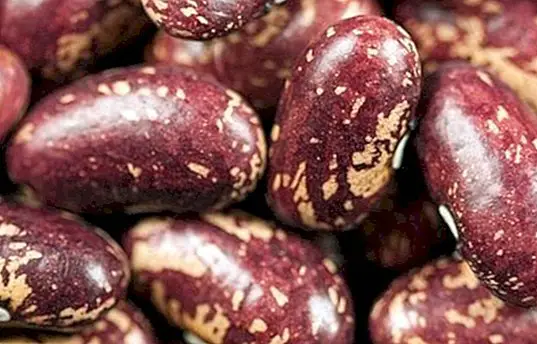Natural analgesics: plants to calm pain
A analgesic is a medicine whose main function is to soothe, relieve or eliminate pain. Among other aspects, it helps reduce or alleviate headaches, muscular, arthritic and other pains or related attacks. Among the different analgesics that exist, we can find non-steroidal anti-inflammatories (the most popular within this group is aspirin), major opioids (such as tramadol) and adjuvant drugs (which are not analgesic in themselves when administered). in an isolated way, as is the case of morphine).
In the case of analgesics, its use is usually very popular and usual in case of headache, especially noteworthy is the use of aspirin for this purpose, since it is a medication that helps soothe, reduce and eliminate pain. However, as with most drugs, self-medication is not at all adequate, since consuming too much pain relievers not only makes the headache worse, it can cause chronic headache.

Nature gives us a whole set of certain plants and herbs with analgesic action, which means that they are natural options when it comes to relieving pain, but with an added virtue: in most cases they do not have the side effects that can get to produce analgesic drugs. In short, we can choose natural analgesics when we suffer from muscle or joint pain, headache, migraines and other related discomforts.
The best natural analgesics
Harpagofito
Known curiously also with the name of claw of the devil, is a plant rich in harpagósido, a glucósido that apparently is effective in the treatment of some cases of arthritis, when reducing the inflammation of the articulations. It helps, therefore, when it comes to relieving inflammation and joint pain.

- Harpagofito decoction: to make the decoction you only need to boil the equivalent of 1 liter of water in a saucepan, and add 5 teaspoons of crushed harpagofito roots. Let boil 3 minutes, then turn off the heat, cover and let rest for 10 minutes. Finally sneak and drink. You can drink 3 cups of this decoction a day.
- Poultice of harpagofitoIt is an ideal option to relieve muscle aches and pains caused by sprains. To make it you must mix the liquid of the decoction of harpagofito with clay until obtaining a creamy paste. Apply it locally in the necessary place, and let it act 20 minutes. Then remove with warm water.
The consumption of the harpagofito decoction is not recommended in case of gastritis, pregnancy, irritable bowel and obstruction of the biliary tract.
Hypericum
It is a plant that exerts a sedative as well as an analgesic effect, so it is an appropriate natural option in the treatment of headaches and headaches, nervous tensions, anxiety and stress and neuralgia (as is the case of sciatica, rheumatic pain and fibrositis).

Its consumption is also recommended in case of nervous tension and irritability associated with menstruation and menopause.
- Infusion of hypericum: it is one of the most recommended options when it comes to enjoying the soothing and analgesic benefits of hypericum. To make the infusion you should boil the equivalent of a cup of water in a saucepan. When the water reaches the boiling point add a teaspoon of St. John's Wort, and let boil 3 minutes. After this time turn off the heat, cover and let rest another 3 minutes. Finally sneak and drink. You can take 3 cups of this infusion a day.
- Poultice of Hypericum: it is an ideal option when it comes to enjoying the soothing qualities of the hyperic, but externally. In this case, it is suitable to calm and cure minor burns, wounds, bruises and varicose veins. To make the poultice mix white clay with water and add a few drops of hypericum essential oil.
Mint
Although in fact the mint is known for its digestive qualities, especially when it comes to relieving gas and stomach upset, did you know that it is one of the most powerful plants in terms of analgesic effect? Act, in fact, very interesting in case of digestive and gastric pain.

- Mint infusion: to make the infusion you should boil the equivalent of a cup of water in a saucepan, and when it starts to boil add 1 teaspoon of mint. Let boil 3 minutes, after this time turn off the heat, cover and let rest another 3 minutes. Straighten and drink. You can take this infusion 3 times a day.
It is not advisable to take this infusion in case of anxiety, stress, nervous tension, insomnia and tachycardia.
Valerian
It is quite likely that you already know the valerian for its recognized tranquilizing action, being definitely one of the most well-known and effective popular sedatives that exist at the time of calming the nervous system. However, did you know that it also exerts an interesting analgesic action, very useful for relieving pain, spasms and intestinal cramps, as well as muscle cramps and pains of menstruation ?.

You can enjoy its qualities in two ways:
- Valerian infusion: to make the infusion, you should boil the equivalent of 1 teaspoon of valerian roots in a saucepan. When the water starts to boil add the valerian, and leave boiling 3 minutes. After this time turn off the heat, cover and let rest another 3 minutes. Straighten and drink. You can take this infusion 3 times a day.
- Poultice of valerianIt is a recommended option in case of muscle pain, or to relieve migraines and headaches. To make it you must mix a little of the valerian infusion with clay until you get a creamy paste. Apply externally to the painful area and leave on for 20 minutes.
It is not advisable to use valerian in children under 3 years, during pregnancy or lactation.
Images | Chris RubberDragon / Wikimedia / Manel / Monika / Nuuuuuuuuuuul This article is published for informational purposes only. It can not and should not replace the consultation with a Physician. We advise you to consult your Trusted Doctor. ThemesAnalgesic


